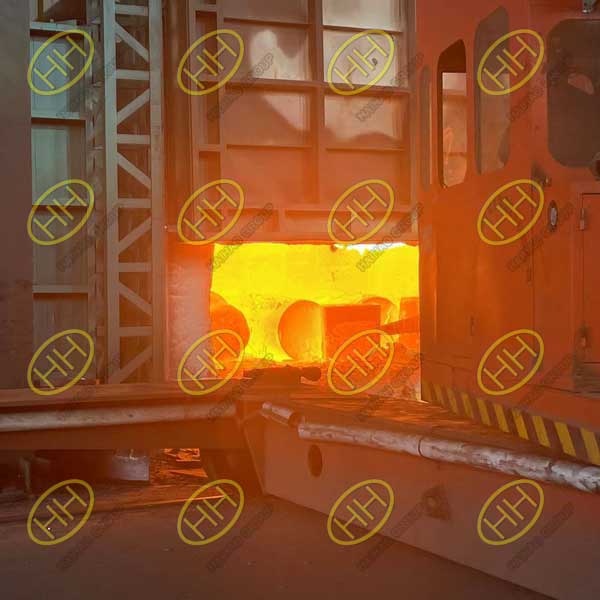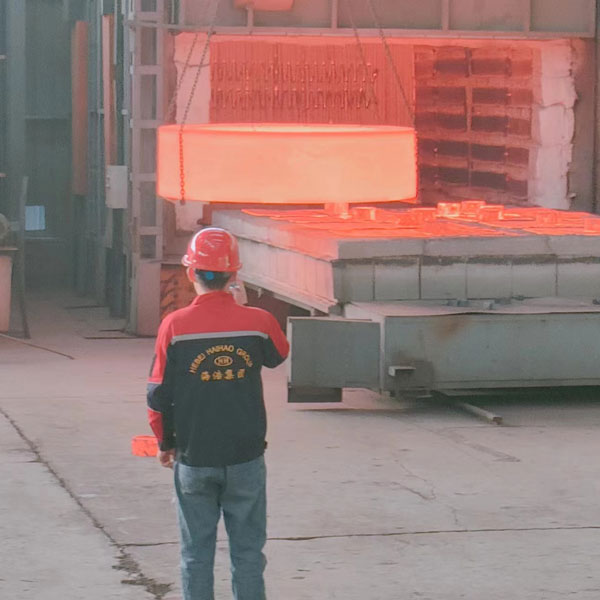Advanced heat treatment techniques for stainless steel forgings
In collaboration with PetroChina, Haihao Group is currently spearheading the production of large stainless steel forgings, encompassing various grades such as 304L, 316L, and 321. We are proud to showcase our expertise in the heat treatment process, ensuring the highest quality standards for these critical components.
1.Loading into the Furnace:
For general carbon steel and small to medium-sized alloy steel forgings, there are no special requirements. However, for large high-alloy stainless steel forgings, it is crucial to keep the entry temperature below 450°C and maintain it for a specific duration.
2.Low-Temperature Heating Rate:
The heating rate during the low-temperature phase can be either full-power heating or a staged approach. Given that the core of the forging is still in an elastic state during this phase, excessive temperature differentials may lead to substantial thermal stress and potential cracking.
3.Intermediate Soaking:
In the heat treatment process for large stainless steel forgings, a widely adopted technique involves intermediate soaking with stepped heating.
4.Heating Rate After Intermediate Soaking:
Following intermediate soaking, where the temperature differential between the surface and core diminishes, the core of the stainless steel forging is in a pliable state. At this stage, a higher heating rate can be employed without posing significant risks to the forging.
5.Isothermal Heating:
Isothermal heating is essential due to the inherent characteristics of large forgings. The heating furnaces for these stainless steel forgings are typically large, resulting in uneven furnace temperatures. Operators rely on temperature readings from thermocouples to monitor temperature uniformity inside the furnace.
After achieving isothermal conditions, the process transitions into the insulation phase. The purpose of insulation is to ensure that the core temperature of the forging reaches the desired heating temperature, completing the austenitic transformation.
At Haihao Group, our commitment to employing advanced heat treatment techniques guarantees the optimal performance and durability of stainless steel forgings. As a reliable partner in the industry, we continuously push the boundaries of innovation to meet and exceed our clients’ expectations.


